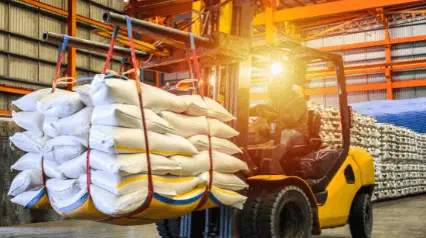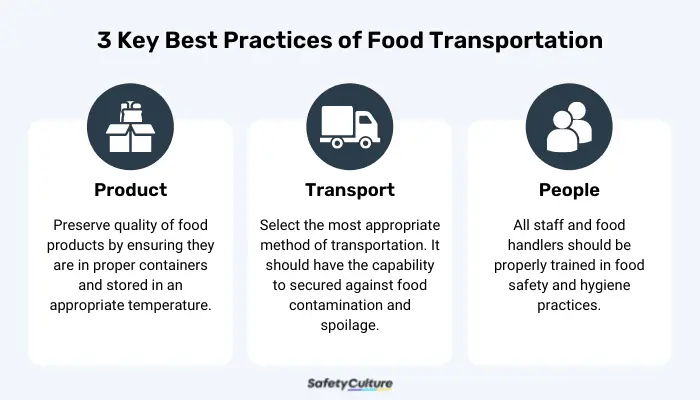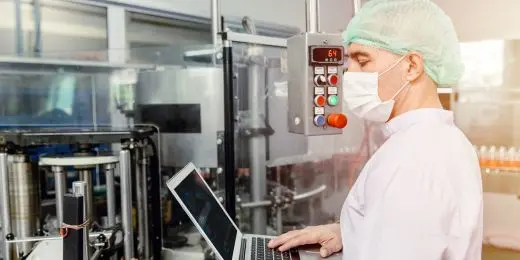What is Food Transportation?
Food transportation is the process of moving food to desired destinations from the food producer to its consumers. It is a crucial factor in maintaining food safety in food manufacturing businesses as it is not exempt from the risk of food contamination. It uses different modes of transportation including air, road, rail, and water. However, among these methods, trucking is the most common in the United States and it makes up around 70.5% of all food transportation.
Importance of Food Transportation
Finished products and raw materials have different lifespans depending on the items to be delivered. Keeping food fresh, safe, and quality assured is crucial for the business. Being unable to keep the product safe can lead to business disruption, lawsuits, and customer complaints. That is why it is important to choose the right method of transporting food. It also helps food businesses to:
- maintain its credibility in meeting food standards;
- follow food safety transportation standards to avoid food contamination; and
- deliver goods to any part of the world in a timely manner.
Food Safety Transportation Standards
Food transportation should maintain food quality standards and keep a scheduled timeline to prevent food contamination specifically with easy-to-perish goods such as fruits, vegetables, meat, and others. Business owners should be aware of the food transportation requirements that they need to apply for their businesses. The Sanitary Food Transportation Act of 2005 requires that FDA prescribe sanitary transportation practices to ensure food—including animal feeds—transported by rail or motor vehicle should not be transported under conditions that may adulterate the food. The FDA Food Safety Modernization Act (FSMA) rule establishes the following requirements:
- Vehicles and transportation equipment – Ensure all vehicles used to transport food are properly designed to secure its safety. Installing sensors would help to maintain the appropriate temperature for frozen products. Proper vehicle maintenance is necessary to preserve and maximize the performance of a vehicle to ensure roadworthiness to avoid transportation delays for time-sensitive or perishable food products.
- Transportation operations – All precautionary measures should be in place including adequate temperature controls, avoiding raw food to touch on ready to consume foods, loading of non-food items in the same load or previous load, and preventing cross-contact to food allergen to prevent food contamination.
- Training – Employees who are assigned to food transportation must learn sanitary transportation practices. Proper documentation of food safety training should be provided when the carrier and shipper agree that the carrier is responsible for sanitary conditions during transport.
- Records – It is necessary to keep records of written procedures, agreements, and training to promote traceability and provide documentation of food business compliance to appropriate practices. The required retention time to keep a record should not exceed 12 months.
Food Transportation Issues
Different industries face various challenges, and the food industry is not exempt. In 2019, the United States encountered key challenges in moving around food such as driver shortages, environmental impacts, and sanitation standards compliance. These challenges made companies identify gaps and strive to improve their food transportation. That said, challenges are always present in the business, and here are other transportation issues that companies must be aware of:
- Must Arrive by Dates (MABDs) and Retailer Chargebacks – MABDs is a strict delivery date agreement between manufacturer and customers. It can be set depending on the parameters such as pallet configuration, appointment scheduling, confirmation processes, business operating hours, and preferred carriers that are agreed upon by both parties. Being unable to comply with the said dates considering the parameters set, incur fees which can lead to business disruption, decreased profitability, and customer dissatisfaction.
- Refrigerated Shipping – Perishability is one of the most common factors to consider when transporting foods. It is important to consider food lifespan and compute its food miles to determine the best transportation method. It is recommended to use transportation with freeze-ability or has control on temperature when shipping temperature-sensitive goods such as medical products, ice cream, meat, wine, and others. Bear in mind that the availability of refrigerated vehicles is also impacted by seasonality.
- Less-than-Truckload (LTL) Shipping – This is a good option for manufacturers who do not have enough freight to fill in a full truck, but it also involves high risks. A large mix of products loaded together may trigger threats of contamination. This type of shipping could also affect the MABDs.
- Handling and Contamination – Food handling is a process of preparing food that is safe for public consumption. It is necessary to comply with safe food handling processes to avoid contamination which may lead to outbreaks of foodborne illnesses e.g. salmonella. According to the World Health Organization (WHO), foodborne illnesses can cause long-lasting disability or even fatality. That is why it is important to keep the vehicle clear of debris, clean, and odor-free before loading the products. The presence of any cross-contaminant could spread throughout the packaging and spoil the goods being shipped. Multiple transfers of goods can also damage the packaging or the product itself, it is advisable to have direct consumer transactions to reduce the risk of contamination.
Improve your EHS Management
Cultivate a safe working environment and streamline compliance with our EHS solutions.
Explore nowBest Practices When Transporting Food
Food handling, packing, and transporting are important factors of food safety. Being aware of the best practices and compliance with regulatory standards can help organizations ensure quality foods are being delivered to their customers. Here are the best practices when transporting food for these 3 key factors of food safety.
Product – the most important element of food delivery. It is valuable to preserve its quality and ensure it is delivered safely to the customers. Here are best practices when handling food that is being prepared for delivery.
- inspect goods for insects and pests to avoid widespread infestation;
- use airtight containers to store dried goods and avoid using cardboard boxes;
- keep dried goods at least 15 centimeters from the floor;
- discard damaged goods immediately to prevent contamination;
- maintain the appropriate temperature and if possible keep goods in a well-ventilated area away from direct sunlight; and
- keep humidity levels as low as possible.
Transportation – an integral part of the modern food system, yet it represents a relatively small contribution to the energy use and associated greenhouse gas emissions of the U.S. food system. It is a fact that foods can easily be contaminated if the containers and vehicles are unclean. All transportation modes should be in good condition and have the capability to keep food at the right temperature. Here are best practices to secure food transportation:
- choose the appropriate method of transportation;
- ensure vehicle roadworthiness to avoid delivery delays;
- keep it clean and in good condition in a way to minimize food contamination;
- separate different types of food such as raw food and ready-to-eat food from non-food items; and
- use insulating cargo blankets or pallet covers to protect the product against freezing temperatures
- refrigerate certain types of food that is required to be kept at a low temperature
People – All staff and food handlers should be properly trained to maintain food safety and food hygiene. Employees should be careful in loading and transporting goods to ensure it stays intact to maintain the quality of the products. It is the employees’ responsibility to:
- secure proper loading and unloading of goods;
- maintain good personal hygiene;
- monitor sanitation associated with food transportation procedures; and
- keep communications between shipper, transporter, and receiver.





